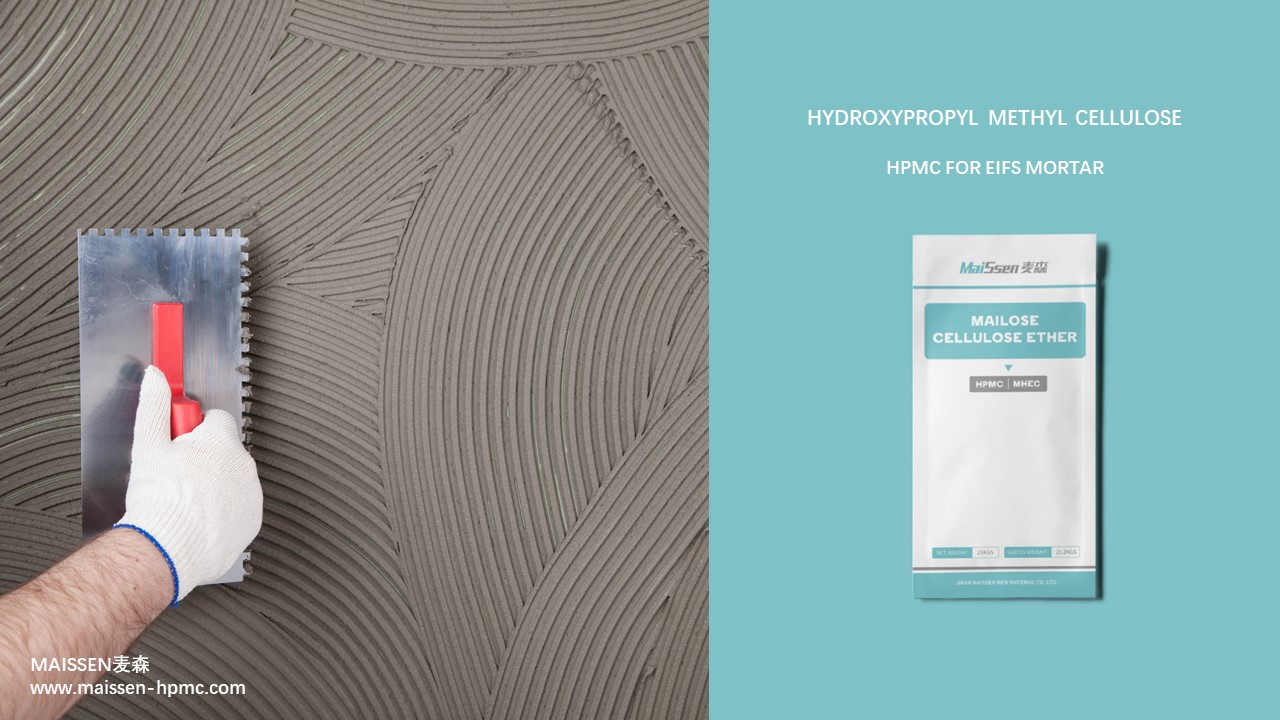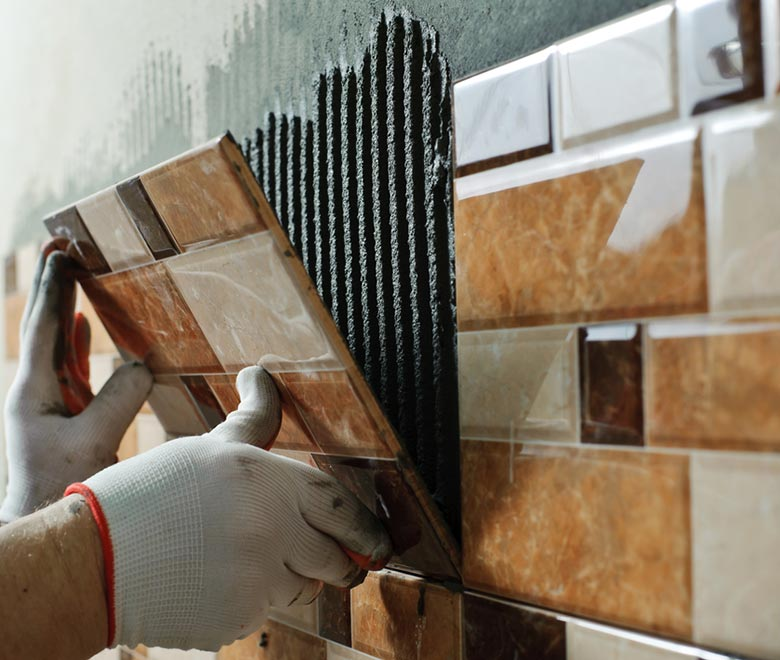According to incomplete statistics, the current output of non-ionic cellulose ether has reached more than 500,000 tons globally, and hydroxypropyl methyl cellulose HPMC accounts for 80% of the 400,000 tons, China in recent two years, a number of companies have expanded production capacity rapidly expanded to the current capacity of about 180 000 tons, about 60 000 tons of domestic consumption, Of this, more than 550 million tons are used in industry and about 70% are used as building additives.
Because of the different uses of the products, the ash index requirements of the products can be different, so that in the production process, the organization of production according to the requirements of different models is conducive to the effect of energy saving, consumption reduction and emission reduction.

1. Ash content of hydroxypropyl methyl cellulose HPMC and its existing form
Hydroxypropyl methyl cellulose (HPMC) industrial quality standards called ash and pharmacopoeia called sulfate, namely burning residue, can simply be understood as the inorganic salt impurities in the product. Mainly by the production process of strong alkali (sodium hydroxide) through the reaction to the final adjustment of pH to neutral salt and raw material original inherent inorganic salt sum.
Method for determination of total ash; A certain amount of samples are burned in a high temperature furnace after carbonization, so that organic materials are oxidized and decomposed, escaping in the form of carbon dioxide, nitrogen oxides and water, while inorganic materials remain in the form of sulfate, phosphate, carbonate, chloride and other inorganic salts and metal oxides, these residues are ash. The total ash content of the sample can be calculated by weighing the residue.
According to the process in the use of different acid and will produce different salt: mainly sodium chloride (by the reaction of chloride ion in chloromethane and sodium hydroxide) and other acid neutralization can produce sodium acetate, sodium sulfide or sodium oxalate.
2. Ash content requirement of hydroxypropyl methyl cellulose HPMC
Hydroxypropyl methyl cellulose HPMC is mainly used for thickening, emulsifying, film forming, colloid protection, water retention, adhesion, enzyme resistance and metabolic inertia, etc. It is widely used in many fields of industry, which can be roughly divided into the following aspects:
(1) Construction: the main role is to retain water, thickening, viscosity, lubrication, flow to improve cement and gypsum workability, pumping. Architectural coatings, latex coatings are mainly used as protective colloid, film forming, thickening agent and pigment suspension aid.
(2) POLYvinyl chloride: mainly used as a dispersant in the polymerization reaction of suspension polymerization system.
(3) daily chemicals: mainly used as protective articles, it can improve the product emulsification, anti-enzyme, dispersion, bonding, surface activity, film forming, moisturizing, foaming, forming, release agent, softener, lubricant and other properties;
(4) pharmaceutical industry: in the pharmaceutical industry is mainly used for preparation production, as a solid preparation of coating agent, hollow capsule capsule material, binder, for the framework of sustained release agents, film forming, pore-causing agent, as a liquid, semi-solid preparation of thickening, emulsification, suspension, matrix application;
(5) ceramics: used as bonding forming agent of ceramic industrial blank, dispersant of glaze color;
(6) paper: dispersion, coloring, strengthening agent;
(7) Textile printing and dyeing: cloth pulp, color, color extension agent:
(8) in agricultural production: used in agriculture to treat crop seeds, can improve germination rate, can moisturize and prevent mildew, fruit preservation, sustained release of chemical fertilizers and pesticides.
From the feedback of the above long-term application experience and the summary of internal control standards of some foreign and domestic enterprises, it can be seen that only some products of PVC polymerization and daily chemical products require salt control < 0.010, and the pharmacopoeia of various countries requires salt control < 0.015. And other uses of salt control can be relatively wider, especially construction grade products in addition to the production of putty, coating salt has certain requirements outside the rest can control salt < 0.05 can basically meet the use.
3. Hydroxypropyl methyl cellulose HPMC process and production method
There are three main production methods of hydroxypropyl methyl cellulose HPMC at home and abroad:
(1) Liquid phase method (slurry method) : the pulverized cellulose powder is dispersed in about 10 times of organic solvent in vertical and horizontal reactors with strong agitation, and then a quantitative alkali solution and etherifying agent are added for reaction. After the reaction, the finished product is washed, dried, crushed and sieved with hot water.
(2) Gas-phase method (gas-solid method) : the reaction of pulverized cellulose powder is completed in almost semi-dry state by directly adding quantitative lye and etherifying agent and recovering a small amount of low-boiling by-products in a horizontal reactor with strong agitation. No need to add organic solvent for the reaction. After the reaction, the finished product is washed, dried, crushed and sieved with hot water.
(3) Homogeneous method (dissolution method) : The horizontal can be added directly after crushing of cellulose with a strong stirring reactor scattered in naoh/urea (or other solvents of cellulose) about 5 ~ 8 times of water freezing solvent in solvent, then adding quantitative lye and etherifying agent on reaction, after the reaction with acetone precipitation reaction good cellulose ether, Then hot water washing, drying, grinding, screening to get the finished product. (It is not yet in industrial production).
The reaction end no matter use which kinds of methods mentioned above have a lot of salt, according to different process can produce are: sodium chloride and sodium acetate, sodium sulfide, sodium oxalate, and so on mix salt, need through the desalination, the use of salt in the water solubility, generally with plenty of hot water washing, now the main equipment and way of washing are:
(1) Belt vacuum filter; It is used to wash the salt by pouring the raw material into slurry with hot water and then laying the slurry evenly on a filter belt by spraying hot water from the top and vacuumizing the bottom.
(2) horizontal centrifuge: it by the end of the reaction of crude materials into hot water slurry to dilute dissolved salt by hot water and then through centrifugal separation of liquid and solid separation to remove salt.
(3) with the pressure filter, it by the end of the reaction of the crude material into the slurry with hot water, it into the pressure filter, first with steam to blow water with hot water spray N times and then with steam to blow water to separate and remove salt.
Hot water washing to remove dissolved salts, because need to join the hot water, washing, the more the more the lower the ash content, and vice versa, so its ash is directly related to how much the amount of hot water, the general industrial product if ash control under 1% USES hot water 10 tons, if control under 5% will need about 6 tons of hot water.
Cellulose ether waste water chemical oxygen demand (COD) is as high as 60 000 mg/L, salt content is also more than 30 000 mg/L, so the treatment of such sewage needs to be very high cost, because such high salt direct biochemistry is difficult, according to the current national environmental protection requirements treatment is not allowed to dilute, The fundamental solution is to remove salt by distillation. Therefore, one more ton of boiling water washing will produce one more ton of sewage. According to the current MUR technology with high energy efficiency, evaporation and salt removal, the comprehensive cost of each treatment of 1 ton of washing concentrated water is about 80 yuan, and the main cost is comprehensive energy consumption.
4. Influence of ash content on water retention of hydroxypropyl methyl cellulose HPMC
HPMC mainly plays three roles of water retention, thickening and convenient construction in building materials.
Water retention: increase the opening time of water retention material, and fully assist its hydration.
Thickening: cellulose can be thickened to suspension, so that the solution remains uniform up and down the role of anti-flow hanging.
Construction: cellulose has lubrication effect, can have good construction. HPMC is not involved in how chemical reactions take place, but only plays a supporting role. The most important one is water retention, which affects the homogeneity of mortar, and then affects the mechanical properties and durability of hardened mortar. Mortar is divided into masonry mortar and plastering mortar are two important parts of mortar materials, the important application of masonry mortar and plastering mortar is masonry structure. As a block in the application in the process of the products is in the dry state, in order to reduce the dry block of strong water absorption of mortar, construction adopts the block before prewetting, to block certain moisture content, keep moisture in the mortar to block material excessive absorption, can maintain normal hydration internal gelling material such as cement mortar. However, the factors such as different types of blocks and the degree of pre-wetting on site will affect the water loss rate and water loss of mortar, which will bring hidden trouble to the overall quality of masonry structure. The mortar with excellent water retention can eliminate the influence of block materials and human factors and ensure enough homogeneity of mortar.
The influence of water retention on the hardening property of mortar is mainly reflected in the influence on the interface area between mortar and block. As the mortar with poor water retention loses water quickly, the water content of mortar at the interface area is obviously insufficient, and the cement cannot be fully hydrated, which affects the normal development of strength. The bonding strength of cement-based materials mainly depends on the anchoring effect of cement hydration products. The insufficient hydration of cement in the interface area reduces the bonding strength of the interface, and the phenomenon of mortar cavitation and cracking increases.
Therefore, choosing the most sensitive to water retention requirement building K brand three batches of different viscosity, through different ways of washing to appear the same batch number two expected ash content, and then according to the current common water retention test method (filter paper method) on the same batch number different ash content of the water retention of three groups of samples the specific as follows:
4.1 Experimental method for testing water retention rate (Filter paper method)
4.1.1 Application instruments and equipment
Cement mixer, measuring cylinder, balance, stopwatch, stainless steel container, spoon, stainless steel ring mold (inner diameter φ 100 mm× outer diameter φ 110 mm× high 25 mm, fast filter paper, slow filter paper, glass plate.
4.1.2 Materials and reagents
Ordinary Portland cement (425#), standard sand (through clean water without mud sand), product samples (HPMC), clean water for experiment (tap water, mineral water).
4.1.3 Experimental analysis conditions
Laboratory temperature: 23±2 ℃; Relative humidity: ≥ 50%; The laboratory water temperature is 23 ℃ as room temperature.
4.1.4 Experimental method
Put the glass plate on the operating platform, put the slow filter paper (weight: M1) on it, and then put a fast filter paper on the slow filter paper, and then put the metal ring mold on the fast filter paper (the ring mold shall not exceed the circular fast filter paper).
Accurately weigh (425#) cement 90 g; Standard sand 210 g; Product (sample) 0.125g; Pour into a stainless steel container, mix well (dry mix) and set aside.
Use cement paste mixer (mixing pot and blade are clean and dry, each experiment after a thorough cleaning, dry once, reserved). Use a measuring cylinder to measure 72 ml clean water (23 ℃), first pour into the stirring pot, then pour the prepared materials, and soak for 30 s; At the same time, lift the pot to the mixing position, start the mixer, and stir at low speed (slow stirring) for 60 s; Stop 15 s scrape the material slurry on the pot wall and blade into the pot; Continue fast stirring for 120 s to stop. Pour all the mixed mortar into the stainless steel ring mold quickly, and time from the moment the mortar contacts the fast filter paper (press the stopwatch). 2 min later, turn the ring mold and take out the chronic filter paper to weigh (weight: M2). Carry out blank experiment according to the above method (the weight of chronic filter paper before and after weighing is M3, M4)
The calculation method is as follows:
Where, M1 — the weight of chronic filter paper before sample experiment; M2 — Weight of chronic filter paper after sample experiment; M3 — Weight of chronic filter paper before blank experiment; M4 — Weight of chronic filter paper after blank experiment.
4.1.5 Precautions
(1) Clean water temperature must be 23 ℃, weighing must be accurate;
(2) After mixing, remove the mixing pot and stir evenly with a spoon.
(3) the mold should be fast, and the side of the side of the mortar pounded flat pounded solid;
(4) Be sure to time the mortar at the moment of contact with the rapid filter paper, do not pour the mortar on the external filter paper.
4.2 the sample
The influence of water retention mainly comes from viscosity, and high viscosity will be worse than high water retention. The fluctuation of ash content in the range of 1%~5% almost does not affect its water retention rate, so it will not affect the use of its water retention performance.
5. Conclusion
In order to make the standard more applicable to reality and conform to the increasingly severe trend of energy conservation and environmental protection, it is suggested that:
The industrial standard of hydroxypropyl methyl cellulose HPMC is divided into grades in ash control, such as: level 1 control ash < 0.010, level 2 control ash < 0.050. In this way, producers can choose by themselves and users can have more choices. Meanwhile, prices can be set based on the principle of high quality and competitive price, so as to prevent the phenomenon of fish-eye confusion and confusion in the market. The most important thing is energy conservation and environmental protection, so that the production of products and the environment are more friendly and harmonious.








